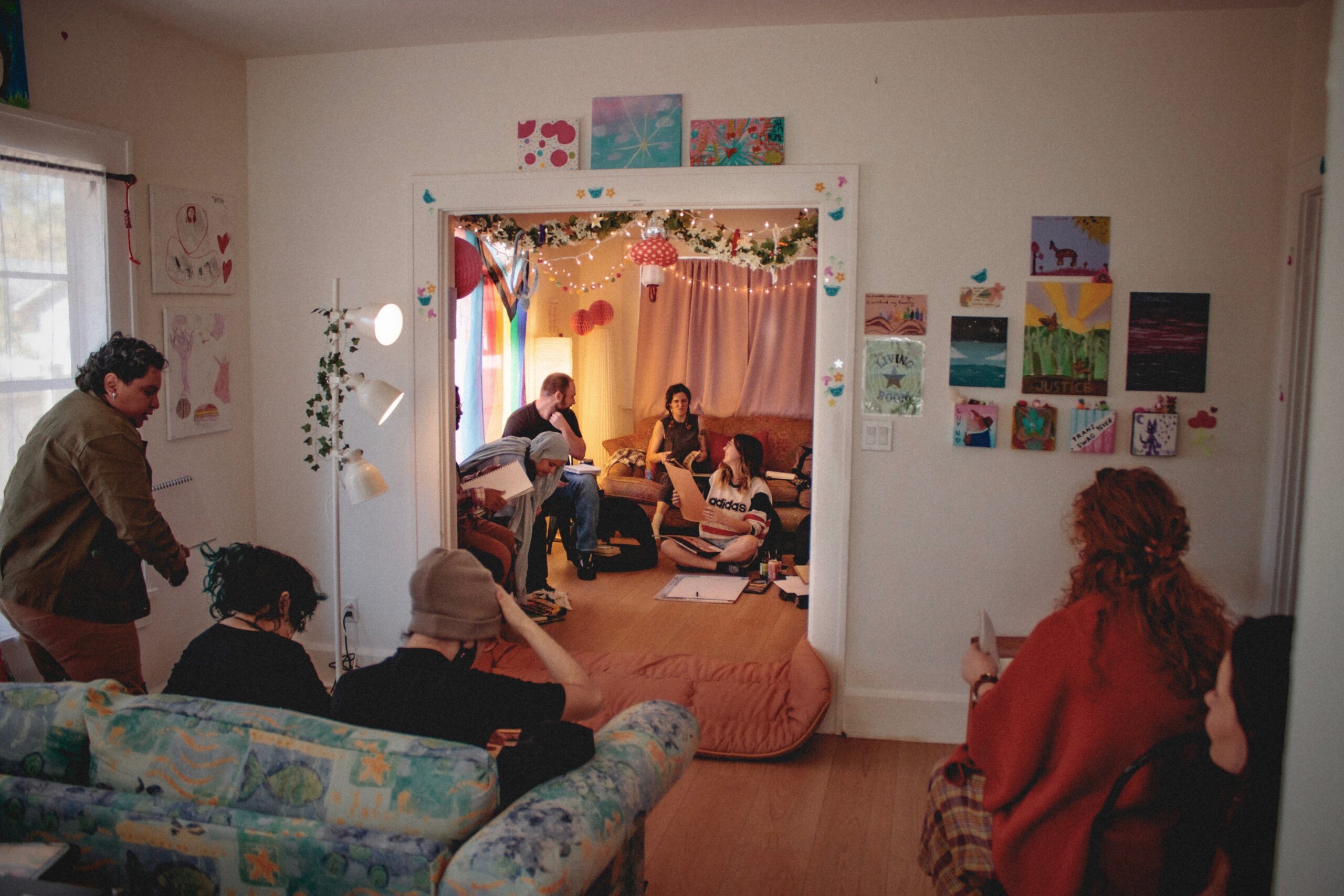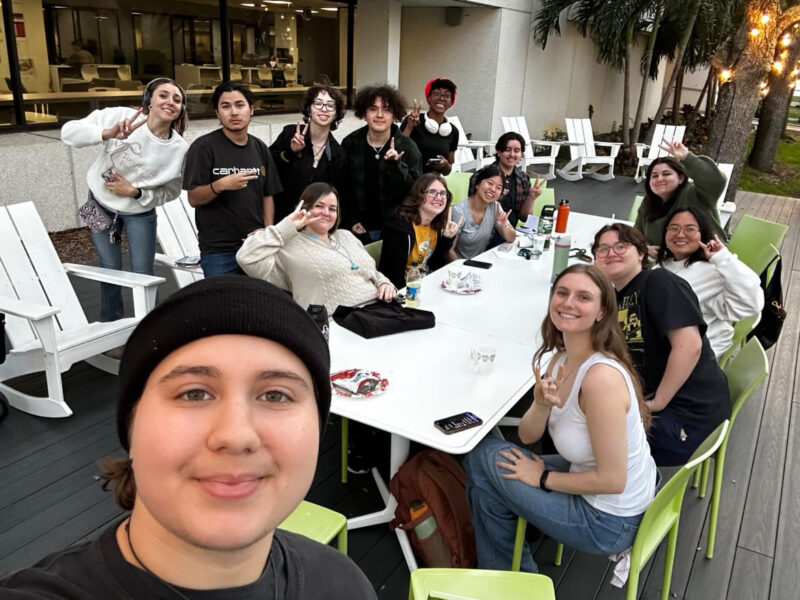By Tiffany Beyer
Gregory Green’s art installation, “Worktable no. 9, he of Righteousness,” ignited a conversation about terrorism, media and free speech at a panel discussion titled “Art and Media in the Era of Extremism” at the Museum of Fine Arts Tuesday evening.
The distinguished panel, comprised of female speakers, compared the purpose and responsibility of art versus that of journalism in an ever-changing media landscape and today’s political climate.
Kristen Shepherd, the executive director of the Museum of Fine Arts, introduced Green, who worked as an artist in New York City for 18 years until he joined USF faculty in 2006.
Green discussed his process and purpose of creating the piece and described it as an example of the “chaos that can exist in our world.”
At first glance, the piece is a life-size representation of a work table enveloped in the type of junk you’d find in any old garage — duct tape, power tools and tall cans of Pabst Blue Ribbon. When viewed more closely, the presence of kitchen timers, fertilizer and a prominently placed pipe bomb, tell a different story.
After Green left the stage, Indira Lakshmanan, the Newmark Chair in journalism ethics at the Poynter Institute was quick to compare the artwork with her real-life experiences covering the fall of the Taliban in Afghanistan and her experience crossing the border from Pakistan into Kandahar, Afghanistan. There she came upon the famous al-Qaeda terrorist training camp in southern Afghanistan where Osama bin Laden and masked terrorists were shown in a recruitment video.
The conversation then digressed into a discussion about how the media covers acts of terrorism.
Mary Shedden, the news director of WUSF, spoke about the way in which most “mainstream media” — something she says she’s proud to be a part of —handles the coverage of acts of terrorism.
“We tell the what but you have to tell the why,” she said. “That’s where I think a lot of media falls short these days.”
Lakshmanan spoke passionately about the potential “contagion effect” that can occur when covering terrorism. An “endless loop of shaky cell phone videos” sensationalize the story and give the people who commit these acts of terror the attention they want.
“Our coverage plays into the hands of terrorists, particularly ISIS,” she said. “It’s like terror porn.”
Shepherd chimed in with an analogy between art and media. Like journalists and their stories, art directors and artists have a “grave responsibility to know that art can activate our audience.”
The topic of free speech took the conversation to the sacred journalistic idea of seek truth and report it.
Trust in the media has declined since the 1970’s and this trend created an atmosphere that birthed hyper-partisan media outlets, according to Lakshmanan.
“Not all outlets have the same standard of truth,” she said.
The panel agreed that more context, reasoning, and sensibility need to be brought to these types of stories.
The discussion ended with Green returning to the stage, where he shared his opinion on the relationship between art and the media.
He said that art is “an instigator of media discussion which becomes more important than the piece itself.”
Shepherd agreed and added that both art and media provide “a window” into worlds that transcend time and culture.
Header photo courtesy of Gregory Green
CORRECTIONS:
**A previous version of this article said that Lakshmanan covered terrorism-related news in Pakistan. While she did that also, Lakshmanan described covering the fall of the Taliban in Afghanistan.
**Lakshmanan was not the first on the scene of the historic capture of Osama bin Laden, as previously reported. In the panel discussion, Lakshmanan spoke about covering the fall of the Taliban in Afghanistan in late 2001. Bin Laden was captured in Abbottabad, Pakistan, 10 years after the events she described in the panel. At the time of bin Laden’s capture, Lakshmanan was living in Washington, DC. She never referred to bin Laden’s capture, and never claimed to be at the scene.



